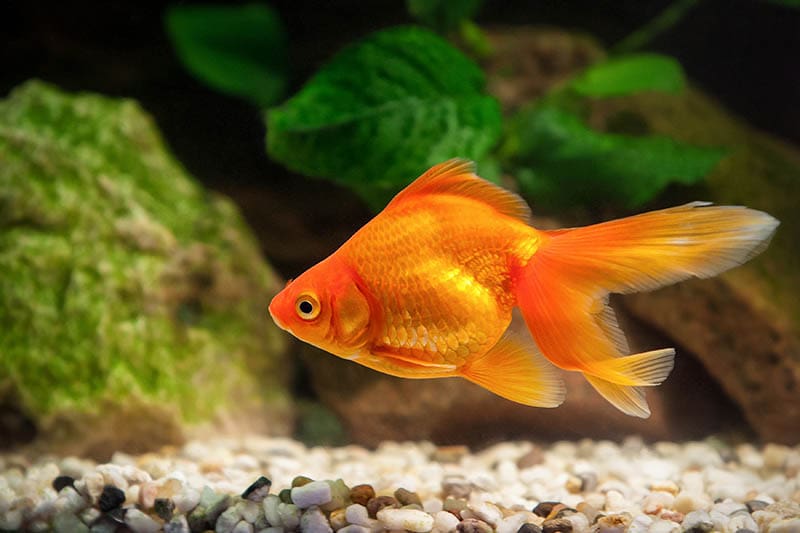What Is a Novel Protein Diet? Our Vet Explains

Updated on

Click to Skip Ahead
If you have been looking for information about food allergies, you may have come across the term “novel protein.” Often, vets will recommend feeding your cat or dog a novel protein diet to determine if food is indeed the problem, but what is a novel protein diet?
The answer is actually quite simple. A novel protein is a protein source, usually a type of meat, that your pet has never eaten. When it comes to food allergies, the culprit is almost always a protein, with beef and chicken at the top of the list. In order to confirm this, we need to remove all protein types that your pet has eaten before and offer them something entirely different—a novel protein.
When researching novel protein diets, you may come across unusual protein sources like ostrich, insects, venison, and even feathers! However, a novel protein diet doesn’t necessarily require a unique ingredient; it just needs to be unique to your pet.
Confused? Don’t worry. We’re going to take a look at why your pet might need to be fed a novel protein diet and what exactly that means.
What Are Novel Protein Diets Used For?
Several different terms are often used interchangeably to describe food reactions: sensitivity, intolerance, allergy, or hypersensitivity. Gastrointestinal food reactions are more commonly due to a direct sensitivity or intolerance, whereas a skin reaction to food is an allergy or hypersensitivity; it’s an immune-mediated reaction to an allergen in the diet, most commonly, proteins.
Novel protein diets are used to diagnose a food allergy and may also be used to treat a food reaction. Food allergies will typically present either with skin reactions or gastrointestinal signs, but rarely both together.
Unlike most allergic reactions, food allergies can often take days or weeks to produce clinical signs, and some pets will develop an allergy to a food they have been eating for years. This makes food allergies trickier to recognize. The signs of a food allergy will also mimic a large number of other common diseases, so your vet will need to rule these out. Another challenge is that food allergies can also occur alongside, or even trigger, other problems, such as atopic dermatitis (atopy) or protein-losing enteropathy. Diagnosing a food allergy is not a quick process and can be frustrating and sometimes expensive. However, the results will be worth it. Your vet will take a detailed history of your pet’s clinical signs: how long they’ve been happening, what sort of diet you feed them, where they go, etc. Depending on the type of clinical signs your cat or dog is showing, they will likely perform the following tests: Dogs and cats with skin reactions to food often have secondary bacterial or yeast infections, and these must be treated first. Once your vet has ruled out other potential causes of your pet’s skin or gastrointestinal signs, they may recommend a food trial or elimination diet. This means removing all possible allergens, which are usually meat proteins, from your pet’s diet and feeding them a diet based on a protein they have not eaten before. If the immune system has not encountered that protein before, it will not be sensitive to it. They need to eat this food—and nothing else—for a period of 6–12 weeks. If their clinical signs improve, it is highly likely that food is the problem. If not, further investigation is needed. There are a range of tests that can be used to look for allergies based on blood, saliva, or intradermal testing. However, many of these tests have a high rate of false positives, especially in dogs less than 12 months old. Food trials continue to be the most accurate and reliable method of diagnosing food allergies, both for humans and pets. Once we know that your pet’s gastrointestinal or skin condition improves on the food trial, we need to have a plan for their long-term diet. If your cat or dog likes the food from the trial and this food is nutritionally balanced and appropriate for their age and lifestyle, some people prefer to just keep them on that food permanently. However, sometimes the food used in the elimination diet may not contain everything your cat or dog needs long term. The next step in this process is to “challenge” your pet’s sensitivity with different proteins, one by one, to see which ingredients cause a reaction. This can be a long and arduous process, but if you find out that your pet is only allergic to one ingredient, it will be well worth the effort. It is quite common for animals that have a skin-based food allergy to be reactive to environmental allergens as well. These pets will often require immunosuppressive medications alongside a diet change to keep their clinical signs under control. It may be tempting to just use the medication rather than go through the time and effort of an elimination diet, but these types of medications are often expensive and have significant side effects. If we can reduce the intensity of their clinical signs by finding a suitable diet, we can reduce the doses of those medications, which can significantly improve the lifespan of your beloved pet. A novel protein is a protein source, that can be animal or plant-based, that your pet has never eaten before. Your pet’s immune system will not recognize this new protein, so it will either take time to react to it or not react to it at all. The other important factor of a novel protein diet trial is that it must consist only of that protein, also called a single protein diet. Great care must be taken when selecting food for an elimination diet because many commercial foods will include other meat sources in their ingredients list, so you must be sure to look closely at what is written on the back of the pack, not just the front. Beef fat, pork fat, chicken meal, meat meal, and fish meal are all common additives in pet foods, so be on the lookout for these. If in doubt, check with your vet to make sure you’re selecting the right food. There is no specific “ideal” novel protein; it will be largely determined by what sort of foods your pet has been eating. For example, if your cat has only ever eaten poultry-based foods, a novel protein diet for them might consist of rabbit, fish, or venison. However, if your dog has been eating a variety of proteins, finding a novel protein may be more difficult. For pets that have been exposed to a wide range of different meats, there are still a number of protein options to choose from, including: As we mentioned earlier, many foods will include other proteins in their recipes, but these tend to be more common (cheaper) meats. If you’re not sure which ingredients have been on your cat or dog’s menu, it may be sensible to use one of these more unique ingredients for your elimination diet. If in doubt, check with your vet to make sure you’re selecting the right food. Plant-based proteins are becoming more and more popular, both for reasons of sustainability and their low allergen status, and this is also true in pet foods. With the increased production of plant-based foods that meet human protein requirements, many dog food companies are also utilizing these ingredients to create hypoallergenic diets. There is evidence that supports the safety of feeding a nutritionally balanced plant-based diet to dogs; however, the jury is still out with regard to the long-term benefits or harm of a vegan diet for cats. With regards to selecting a novel protein source for an elimination diet, plant-based protein is a good option, as not only will it be novel, but it is less likely to trigger any reaction in your pet. Whether you keep your dog or cat on this type of diet long-term is something you should discuss with your vet. Absolutely. In fact, this can be one of the easiest ways to ensure that no other meats are being included in the diet trial. Keep in mind when using a raw single protein diet, and raw feeding in general, that the diet must be nutritionally balanced. Feeding raw meat alone will deprive your pet of essential vitamins and minerals. Cats can develop taurine deficiency if they are not fed the right components, which can cause digestive issues, blindness, and heart disease. The usual precautions must be taken when feeding your pet a raw diet to reduce the risk of spreading pathogens like Salmonella and Campylobacter, which can affect pets and humans. You should talk to your vet about what your pet can and can’t eat during an elimination diet. In theory, if the treat contains the same protein that is being fed in the food trial, it could still be given, provided it is also a single protein treat. A good example would be a cat on a turkey-based food trial being given the odd bit of plain cooked turkey meat as a treat. Hydrolyzed diets are a type of hypoallergenic food that uses meat products that have gone through a process called hydrolysis, which breaks the proteins down into tiny particles that the immune system doesn’t recognize. These sorts of diets are often used for pets with food sensitivities, but they do not address the underlying allergy itself. The main problems with hydrolyzed diets are that the hydrolysis process can make the food less palatable, they are quite expensive, and there is evidence that the process does not completely eliminate all allergens from the food. As we discussed earlier, if a pet has lots of different types of proteins/meats in their diet, there will be a much smaller list of options for a novel protein diet if needed in the future. For us, variety is the spice of life, but for cats and dogs, it is less of a priority. Provided you are offering them a well-balanced, nutritious, and tasty food, they won’t mind if it is only based on one or two different protein sources. You don’t necessarily need to limit your pet to a single protein diet, but a smorgasbord of different meat types is best avoided. If your pet doesn’t have any signs of food allergies, there is no need to feed them hypoallergenic/anallergenic/hydrolyzed food. Stick to a high-quality diet using one or two types of protein, and avoid foods that are full of artificial colors, flavors, and preservatives. As a general rule, the shorter the ingredient list, the higher the quality. Gluten, grain, or wheat-free diets have increased in popularity in recent years, both for humans and our pets. There is a misconception that gluten is a harmful ingredient and that gluten-free is therefore healthier. The truth is that gluten is simply a potential allergen for humans and animals, but not a very common one. Irish Setter and Border Terriers do have a higher incidence of gluten allergy than other breeds, but overall, less than 1% of the canine population is believed to be allergic to gluten. In 2019, the FDA flagged a potential link between some grain-free diets and heart disease in dogs, but this is yet to be fully confirmed. The take-home message is that unless your pet has a proven allergy to wheat/gluten, there is no benefit to feeding them a gluten-free diet. A novel protein diet uses a single protein (meat or plant-based) that the cat or dog has not eaten before. It is used to diagnose a food allergy and sometimes to treat that allergy as well. If your pet’s clinical signs improve on a novel protein diet, it is highly likely that food is the problem, although some animals can be reactive to environmental allergens as well. To confirm a food allergy/sensitivity, we need to reintroduce different proteins one at a time to work out which meat ingredients are the source of the allergy. There is no need for pets without signs of a food allergy to be fed hypoallergenic or gluten-free diets; however, it is a good idea to limit the number of different types of proteins in their diet. This will leave a wider selection of novel proteins if needed later in life. The use of novel protein elimination diets continues to be the most accurate and reliable way to diagnose food allergies, but only once other causes of your pet’s clinical signs have been excluded or treated. Always speak to your vet before changing your pet’s food, especially if a food allergy is suspected. Featured Image Credit: Maja Kjortosheva, Shutterstock
Diagnosing Food Allergy
What About Allergy Testing?
Treating Food Allergy
So, What Is a Novel Protein?
What Are the Best Novel Proteins?
Animal or Vegetable — Which Is Best?
Can You Use a Home Cooked or Raw Novel Protein Diet?
Any More Questions?
Can My Pet Have Any Treats When They Are on a Novel Protein Diet?
What About Hydrolyzed Diets?
Is a Single Protein Diet Better Even if My Pet Doesn’t Have Allergies?
What About Gluten?
The Takeaway


















